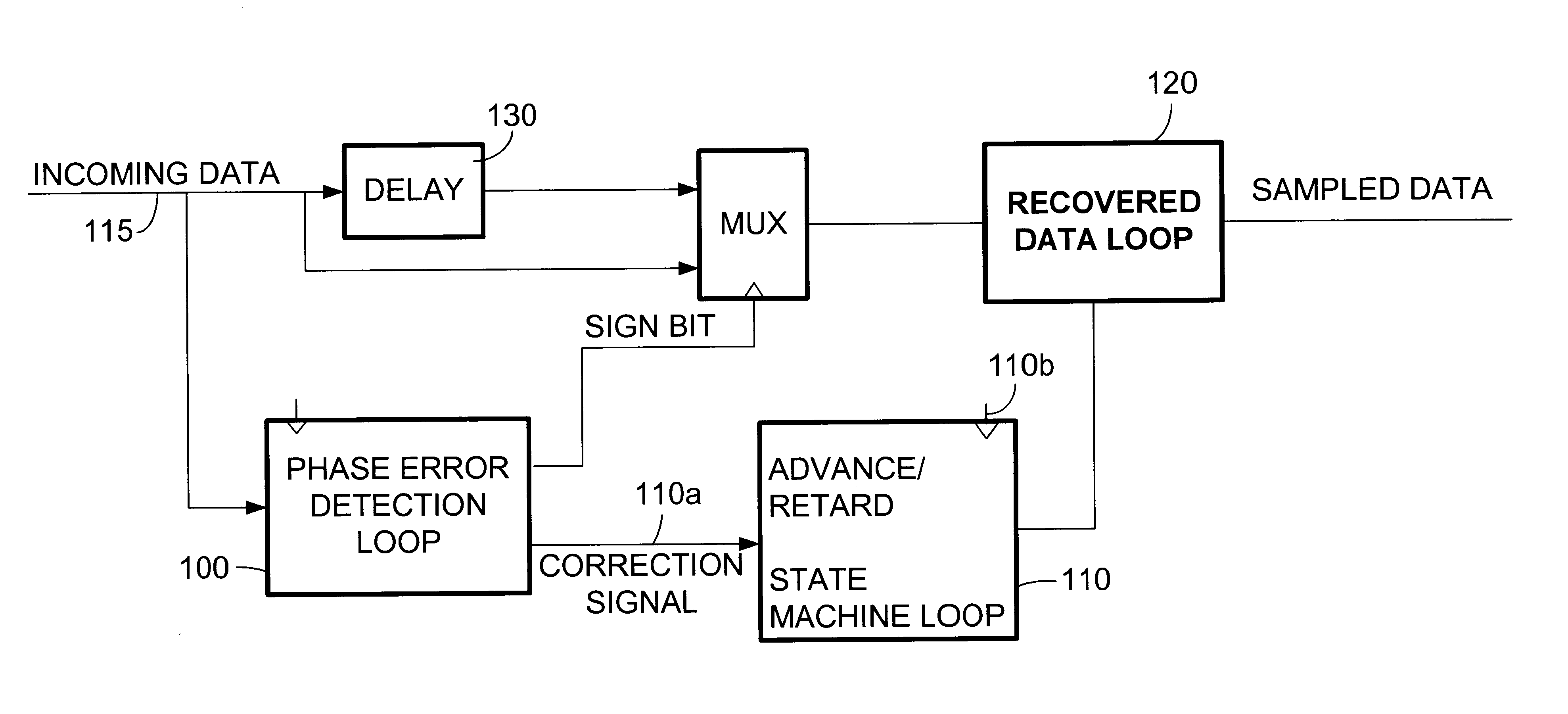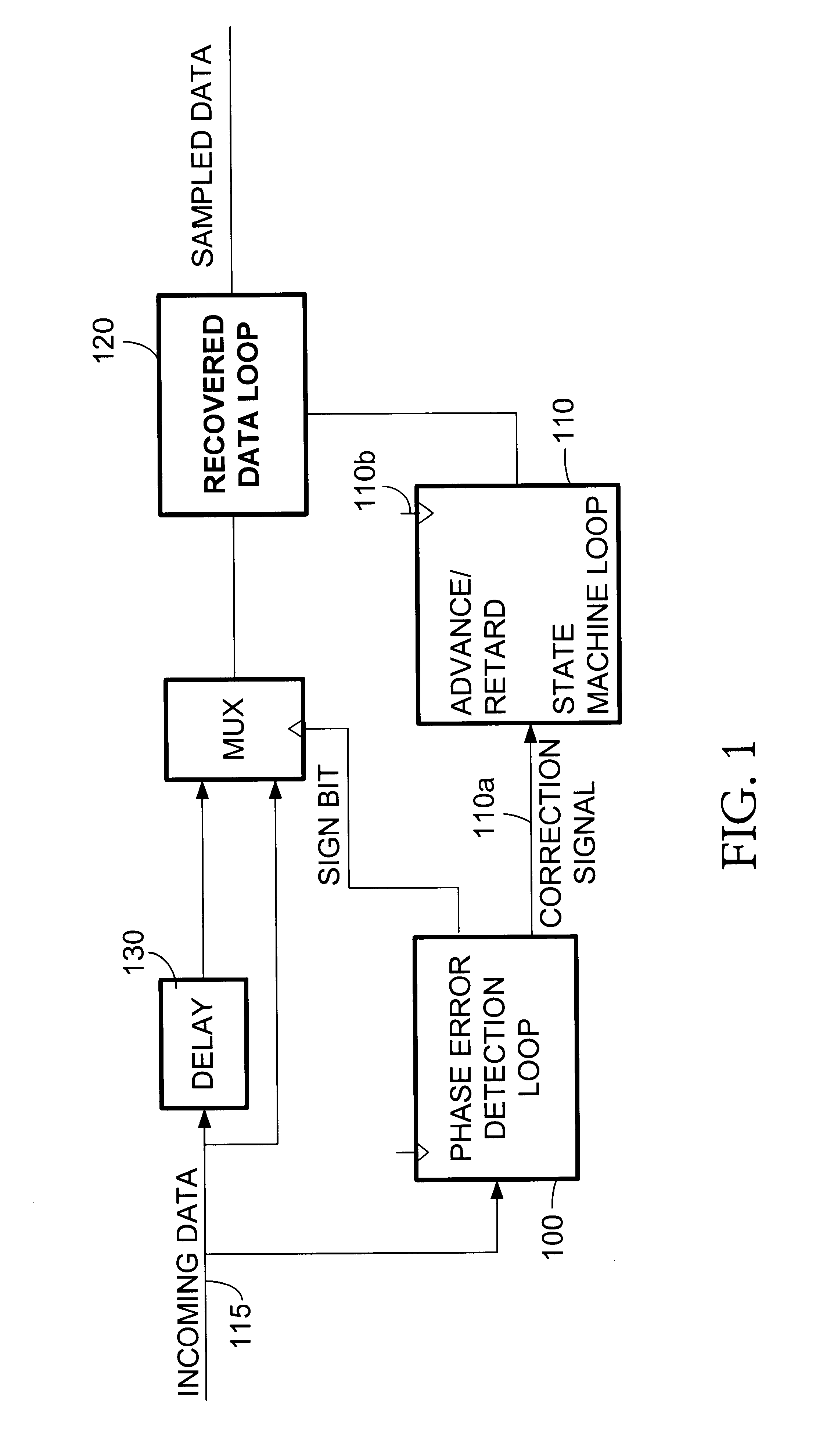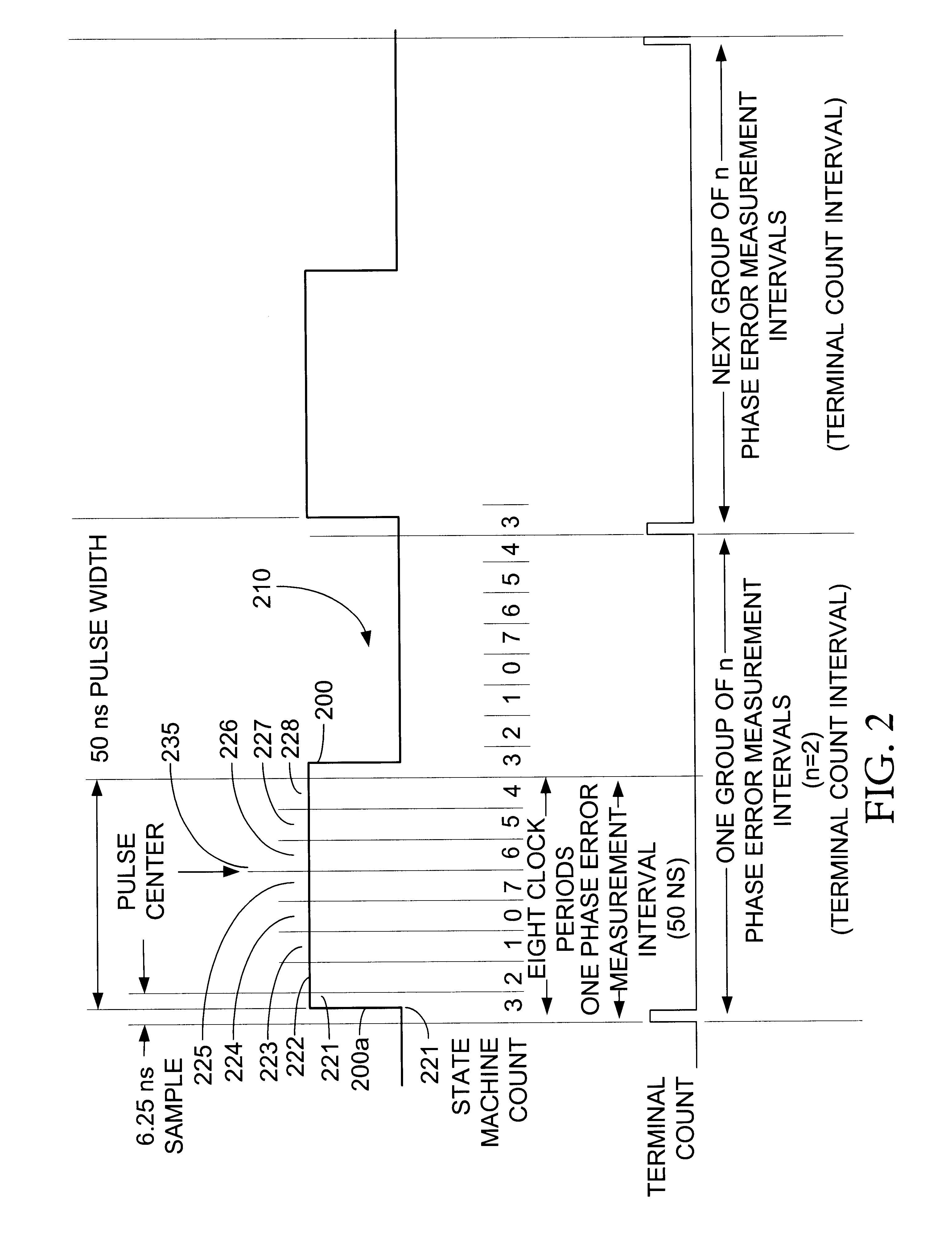Digital receive phase lock loop with cumulative phase error correction and dynamically programmable correction rate
a phase lock loop and digital technology, applied in the direction of digital transmission, pulse automatic control, synchronisation signal speed/phase control, etc., can solve the problems of system failure, system failure, and apparent position drift of each pulse,
- Summary
- Abstract
- Description
- Claims
- Application Information
AI Technical Summary
Problems solved by technology
Method used
Image
Examples
Embodiment Construction
FIG. 8 illustrates the preferred embodiment of a phase lock the invention, which is a PLL including the four embodiments of FIGS. 1, 3, 4 and 5.
(1) Conversion to a Serial Bit Stream:
The incoming data stream is received on a coaxial cable which may be 100 meters long, for example. At the PLL's input terminal 801, three comparators are connected across the inner and outer conductors of the cable 801, namely a HI comparator 803, a LO comparator 805 and a ZC (zero crossing) comparator 807. The HI comparator 803 has an output that is a logic high whenever the voltage of the received data signal exceeds +250 mV, the LO comparator 805 has an output that is a logic high whenever the voltage of the received data signal falls below -250 mV while the ZC comparator 807 has an output that is a logic high whenever the voltage of the received data signal is a small voltage (.+-.5 V) near zero volts. A conventional parallel-to-serial converter 809 converts the parallel logic outputs of the comparat...
PUM
 Login to View More
Login to View More Abstract
Description
Claims
Application Information
 Login to View More
Login to View More - R&D
- Intellectual Property
- Life Sciences
- Materials
- Tech Scout
- Unparalleled Data Quality
- Higher Quality Content
- 60% Fewer Hallucinations
Browse by: Latest US Patents, China's latest patents, Technical Efficacy Thesaurus, Application Domain, Technology Topic, Popular Technical Reports.
© 2025 PatSnap. All rights reserved.Legal|Privacy policy|Modern Slavery Act Transparency Statement|Sitemap|About US| Contact US: help@patsnap.com



